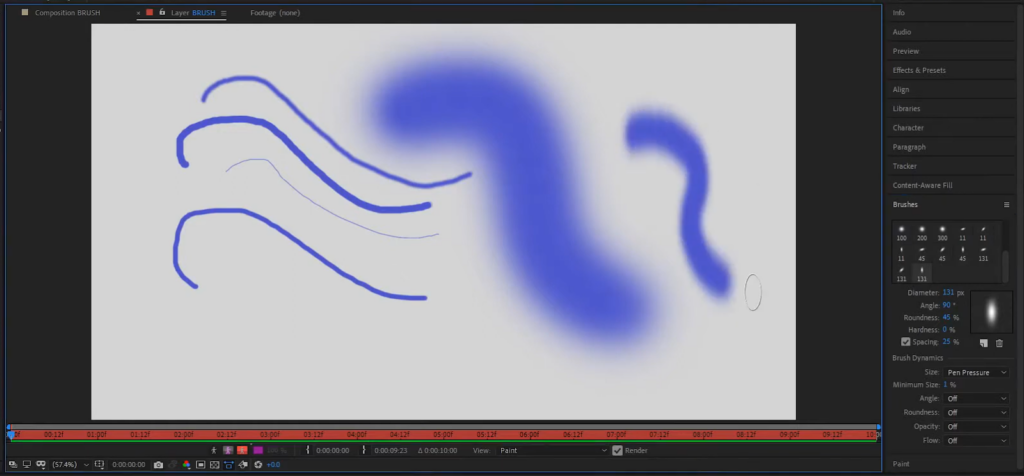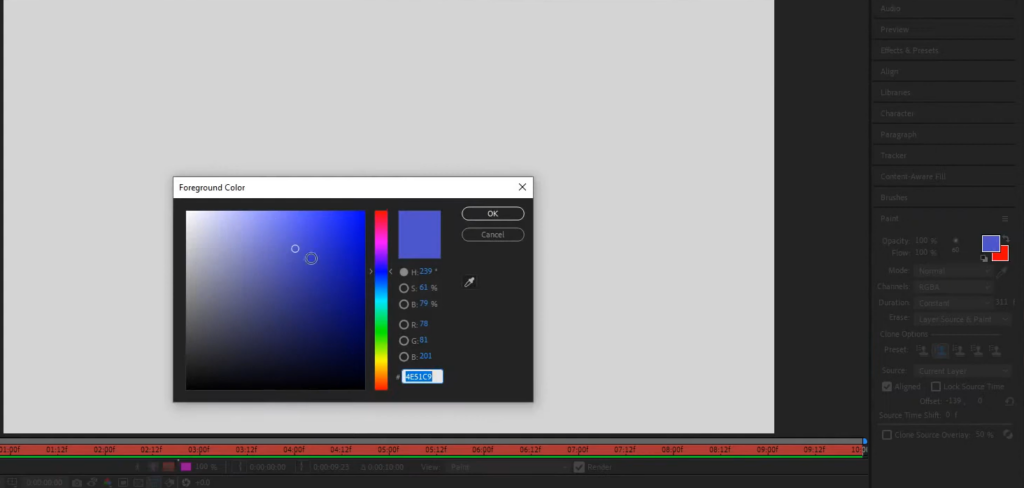The Art of Painting in After Effects
After Effects is widely known for its robust motion graphics and visual effects capabilities. However, it also offers powerful tools for digital painting and creating unique artwork within the software itself. In this comprehensive guide, we will explore the techniques and workflows to paint in After Effects, allowing you to unleash your creativity and add an artistic touch to your animations. Whether you’re a seasoned artist or new to digital painting, this article will provide you with the knowledge and skills to create stunning painted visuals directly within After Effects.
Getting Started with Painting in After Effects
Before diving into the painting techniques, let’s ensure you have the necessary setup. Start by creating a new composition in After Effects, specifying the desired dimensions and duration for your artwork. Next, import any necessary reference images or textures that will aid your painting process.
After Effects offers several painting tools, including the Brush tool, Clone Stamp tool, and Eraser tool. Familiarize yourself with these tools and their respective settings. Experiment with different brush sizes, opacity, and blending modes to achieve the desired effect. Additionally, take advantage of the color picker and swatches to select the perfect color palette for your artwork.
Creating Brush Strokes and Textures
To begin painting, select the Brush tool and adjust its settings according to your preferences. Start by choosing the desired shape and size. Consider experimenting with different brush types, such as standard, calligraphy, or custom brushes available in After Effects.
With your brush settings in place, it’s time to start painting. Use smooth and deliberate strokes to create the base colors and shapes of your artwork. Layer multiple brush strokes to add depth and texture to your composition. Remember to utilize the opacity settings to achieve varying levels of transparency and blending.

To create realistic textures, consider incorporating the Clone Stamp tool. This tool allows you to duplicate areas of your composition or sample from external sources to introduce textures seamlessly. Adjust the clone source and brush settings to match your desired effect.


| Step | Description |
|---|---|
| 1 | Open After Effects and create a new composition. |
| 2 | Import your footage or artwork into the composition. |
| 3 | Select the layer you want to paint on. |
| 4 | Locate the Brush Tool in the toolbar and click on it. |
| 5 | Adjust the brush settings such as size, hardness, opacity, and color. |
| 6 | Begin painting on the selected layer using smooth brush strokes. |
| 7 | Experiment with different brush types and settings to achieve desired effects. |
| 8 | To create textures, use the Clone Stamp or Eraser Tool to modify brush strokes. |
| 9 | Combine brush strokes and textures with other effects and layers to enhance your composition. |
| 10 | Preview your work and make any necessary adjustments. |
| 11 | Render your composition to finalize the brush strokes and textures. |
| 12 | Export and share your creation with others. |
Applying Effects and Adjustments
After Effects offers a wide range of effects and adjustments that can enhance your painted artwork. Experiment with effects like Gaussian Blur, Roughen Edges, or Turbulent Displace to add visual interest and stylization to your composition. These effects can help simulate different artistic styles or create unique effects that complement your painting.
Additionally, utilize adjustment layers to modify the overall appearance of your artwork. Apply color correction, levels adjustments, or even artistic filters to enhance the mood and tone of your painting. Adjustment layers provide non-destructive editing capabilities, allowing you to refine your artwork without affecting the original painted layers.
Animating Your Painted Artwork
One of the unique aspects of After Effects is its ability to animate artwork, including painted elements. Utilize keyframes and animation properties to bring your painted compositions to life. Experiment with transforming your brush strokes, adding motion blur, or incorporating camera movements to create dynamic and engaging animations.
Consider using the Puppet tool to add organic movements to specific elements of your artwork. This tool allows you to create a mesh over your painted layers and manipulate them to create fluid animations.
Exporting and Sharing Your Artwork
Once you are satisfied with your painted artwork, it’s time to export and share it with the world. After Effects offers various export options, including popular video formats like MP4 or QuickTime. Ensure you choose the appropriate settings for resolution and quality to maintain the integrity of your artwork.
Conclusion
Painting in After Effects opens up a new realm of creative possibilities. By leveraging the software’s painting tools, effects, and animation capabilities, you can create stunning and expressive artwork directly within the application. Through experimentation, practice, and honing your skills, you can achieve remarkable results that elevate your motion graphics and visual storytelling.
FAQ
Yes, After Effects provides a brush tool that allows you to paint directly within the software. The brush tool enables you to create brush strokes, textures, and artistic elements to enhance your animations and compositions.
To paint an image in After Effects, follow these steps:
1. Create a new composition in After Effects.
2. Import the image you want to paint on.
3. Select the brush tool from the toolbar.
4. Adjust the brush settings, such as size, opacity, and hardness.
5. Choose your desired color from the color picker or swatches.
6. Start painting on the image using smooth brush strokes.
7. Experiment with different brushes and blending modes to achieve the desired effect.
8. Continue refining your painting by adding layers, textures, and adjusting effects as needed.
Using the brush tool in Adobe After Effects involves the following steps:
1. Select the brush tool from the toolbar.
2. Adjust the brush settings, including size, hardness, and opacity, using the options panel.
3. Choose a color for your brush strokes using the color picker or swatches.
4. Begin painting on the desired layer or composition using smooth and deliberate strokes.
5. Experiment with different brush types and settings to achieve the desired artistic effect.
6. To erase or modify your brush strokes, use the eraser tool or adjust the brush settings accordingly.
7. Combine the brush tool with other effects, adjustments, and animation techniques to further enhance your artwork.
After Effects offers several paint tools to enhance your artwork and animations:
1. Brush Tool: The primary tool for painting and creating brush strokes directly on your compositions.
2. Clone Stamp Tool: This allows you to duplicate areas of your composition or sample from external sources to introduce textures seamlessly.
3. Eraser Tool: Used to erase or modify painted strokes.
4. Puppet Tool: This enables you to add organic movements to specific elements of your artwork by creating a mesh and manipulating it.
5. Clone Brush Tool: Similar to the Clone Stamp tool, it lets you sample and paint at the same time, combining cloning and painting functionality.
